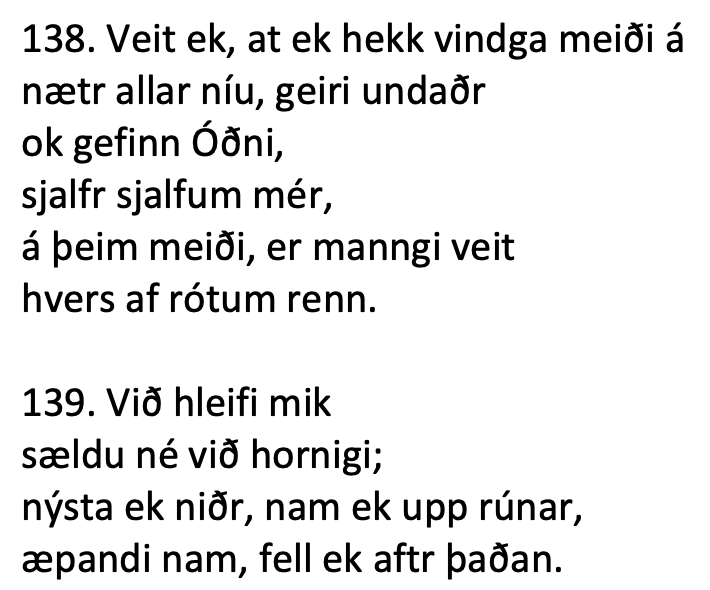Francis Bacon had a wonderfully pungent way of making points that have become commonplace in the era of scientific modernity. In the following passage, he denounces the previously dominant academic movement, Scholasticism, for speculating fruitlessly about empty questions instead of studying nature with empirical rigor and practical objectives:
Surely, like as many substances in nature which are solid do putrefy and corrupt into worms;—so it is the property of good and sound knowledge to putrefy and dissolve into a number of subtle, idle, unwholesome, and (as I may term them) vermiculate [like intestinal worms] questions, which have indeed a kind of quickness and life of spirit, but no soundness of matter or goodness of quality. This kind of degenerate learning did chiefly reign amongst the schoolmen [Scholastics], who having sharp and strong wits, and abundance of leisure, and small variety of reading, but their wits being shut up in the cells of a few authors (chiefly Aristotle their dictator) as their persons were shut up in the cells of monasteries and colleges, and knowing little history, either of nature or time, did out of no great quantity of matter and infinite agitation of wit spin out unto us those laborious webs of learning which are extant in their books. For the wit and mind of man, if it work upon matter, which is the contemplation of the creatures of God, worketh according to the stuff and is limited thereby; but if it work upon itself, as the spider worketh his web, then it is endless, and brings forth indeed cobwebs of learning, admirable for the fineness of thread and work, but of no substance or profit. (Advancement of Learning (1605) I (iv) 5)
Many since Bacon have shared his impatience with philosophy as an idle and bootless pursuit. A common insult is “navel-gazing,” but Bacon heightens that critique by imagining philosophers looking beneath their navels at the disgusting worms within. As an alternative, he advocates “the contemplation of nature” and “the observations of experience” (I.V(1)6), which will yield secure and profitable knowledge.
One rejoinder is that natural science cannot address such crucial questions as “What is justice?” and “What is a good life?” A second response is that natural science makes fundamental but often unexamined assumptions about metaphysics and epistemology. Bacon and his successors would consider such issues fruitless, but Kant argues in the original preface to his Critique of Pure Reason that “it is in reality vain to profess indifference in regard to such inquiries, the object of which cannot be indifferent to humanity. Besides, these pretended indifferentists, however much they may try to disguise themselves by the assumption of a popular style and by changes on the language of the schools, unavoidably fall into metaphysical declarations and propositions, which they profess to regard with so much contempt” (Meiklejohn trans.)
Picking up a similar theme, Edmund Husserl wrote in 1929, “Daily practical living is naive. It is immersion in the already-given world, whether it be experiencing, or thinking, or valuing, or acting. … Nor is it otherwise in the positive sciences. They are naivetes of a higher level. They are the products of an ingenious theoretical technique; but the intentional performances from which everything ultimately originates remain unexplicated” (Cartesian Meditations, English trans. by Dorian Cairns).
Assuming we do want to ask philosophical questions, how can we avoid mere opinions and speculations? A recurrent suggestion is to turn back to the ones who form such opinions–ourselves–and to critically assess how we think and what we have a right to claim. Kant is the most famous proponent of this turn. He calls for a “critical inquiry into the faculty of reason,” which is “not so much occupied with objects as with the mode of our cognition of these objects.” However, my point in this post is that the same move has been made many times, and it is interesting to list and compare the approaches that have been attempted.
Instead of making direct claims about metaphysics, epistemology, or value, one could:
- Critically assess the experts who make or imply such claims and see whether they know what they are talking about. This is Socrates’ main business, as he describes it. He tests the poets, orators, politicians and others to see if they possess knowledge. For the most part, he is interested in the thoughts and methods of individuals who belong to social categories, such as poets, but a roughly similar approach is to critically investigate institutions that purport to generate knowledge, such as labs and clinics. This approach is common in Science and Technology Studies (STS) and the sociology of knowledge today.
- Investigate and clarify the rules of logic, on the premise that useful thoughts should be logical and that only some claims about the world will pass that test. Aristotle inaugurated this approach in Europe, although it had precedents, and it has also been influential in Asia.
- Critically investigate “reason,” understood as a faculty. This is Kant’s explicit approach, but Descartes and many others have begun in a similar way.
- Critically investigate language, on the theory that all complex, declarative thoughts take linguistic form. The “linguistic turn” was one of the main developments of the 20th century.
- Very closely attend to how we experience things, including the self that does the experiencing. This is the phenomenological approach, which Husserl called a “radical new beginning of philosophy” (op cit.) but which had obvious antecedents, including–as Husserl acknowledged–the Pali
CannonCanon in Buddhism. - Study thinking as a natural activity of the brain and nervous system of homo sapiens–although it is tricky to do that without making the kinds of epistemological assumptions that people like Kant and Husserl attribute to empirical science.
(Nothing in this post is original, but I found it interesting to make the above list.) See also: is all truth scientific truth?; the progress of science; why social scientists should pay attention to metaphysics; etc.

